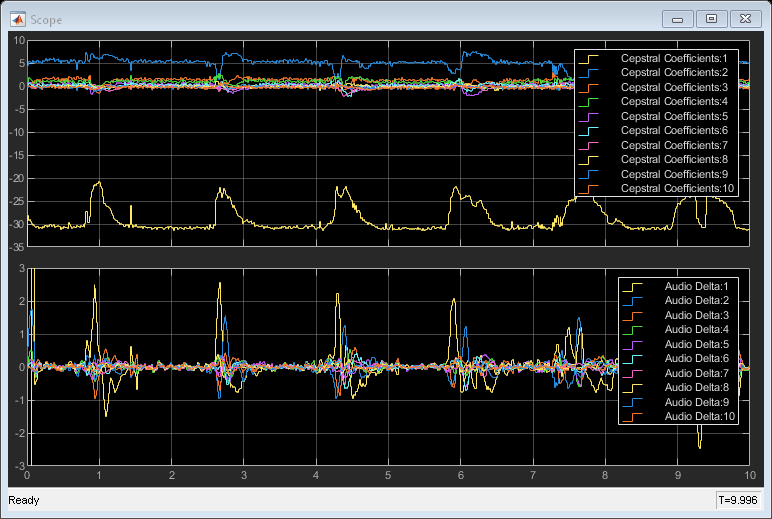Cepstral Coefficients
Libraries:
Audio Toolbox /
Features
Description
The Cepstral Coefficients block extracts the cepstral coefficients from a real-valued spectrogram or auditory spectrogram. Cepstral coefficients are commonly used as compact representations of audio signals.
Examples
Ports
Input
Output
Parameters
Block Characteristics
Data Types |
|
Direct Feedthrough |
|
Multidimensional Signals |
|
Variable-Size Signals |
|
Zero-Crossing Detection |
|
Algorithms
Given an auditory spectrogram, the algorithm to extract N cepstral coefficients from each individual spectrum comprises the following steps.
Rectify the spectrum by applying a logarithm, cubic root, or optionally perform no rectification.
Apply the discrete cosine transform (DCT-II) to the rectified spectrum.
Return the first N coefficients from the cepstral representation.
For more information, see [1].
References
[1] Rabiner, Lawrence R., and Ronald W. Schafer. Theory and Applications of Digital Speech Processing. Upper Saddle River, NJ: Pearson, 2010.
Extended Capabilities
Version History
Introduced in R2022b

